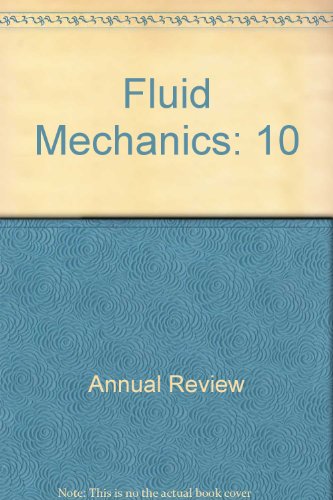Immersed Boundary Methods: Historical Perspective and Future Outlook
IF 30.2
1区 工程技术
Q1 MECHANICS
引用次数: 21
Abstract
Immersed boundary methods (IBMs) are versatile and efficient computational techniques to solve flow problems in complex geometric configurations that retain the simplicity and efficiency of Cartesian structured meshes. Although these methods became known in the 1970s and gained credibility only in the new millennium, they had already been conceived and implemented at the beginning of the 1960s, even if the early computers of those times did not allow researchers to exploit their potential. Nowadays IBMs are established numerical schemes employed for the solution of many complex problems in which fluid mechanics may account for only part of the multiphysics dynamics. Despite the indisputable advantages, these methods also have drawbacks, and each problem should be carefully analyzed before deciding which particular IBM implementation is most suitable and whether additional modeling is necessary. High–Reynolds number flows constitute one of the main limitations of IBMs owing to the resolution of thin wall shear layers, which cannot benefit from anisotropic grid refinement at the boundaries. To alleviate this weakness, researchers have developed IBM-compliant wall models and local grid refinement strategies, although in these cases possible pitfalls must also be considered. Expected final online publication date for the Annual Review of Fluid Mechanics, Volume 55 is January 2023. Please see http://www.annualreviews.org/page/journal/pubdates for revised estimates.浸没边界法:历史与未来展望
浸入边界法(IBMs)是一种通用且高效的计算技术,用于解决复杂几何构型的流动问题,同时保留了笛卡尔结构网格的简单性和效率。尽管这些方法在20世纪70年代才为人所知,直到新千年才获得信任,但它们在20世纪60年代初就已经被构想和实施了,尽管当时的早期计算机还不允许研究人员开发它们的潜力。目前,ibm是用于解决许多复杂问题的数值格式,其中流体力学可能只占多物理场动力学的一部分。尽管这些方法有无可争辩的优点,但它们也有缺点,在决定哪个特定的IBM实现最合适以及是否需要额外的建模之前,应该仔细分析每个问题。由于薄壁剪切层的分辨率,高雷诺数流动是ibm的主要限制之一,它不能从边界的各向异性网格细化中受益。为了缓解这一弱点,研究人员开发了符合ibm的墙模型和局部网格优化策略,尽管在这些情况下还必须考虑可能存在的缺陷。预计流体力学年度评论第55卷的最终在线出版日期为2023年1月。修订后的估计数请参阅http://www.annualreviews.org/page/journal/pubdates。
本文章由计算机程序翻译,如有差异,请以英文原文为准。
求助全文
约1分钟内获得全文
求助全文
来源期刊
CiteScore
54.00
自引率
0.40%
发文量
43
期刊介绍:
The Annual Review of Fluid Mechanics is a longstanding publication dating back to 1969 that explores noteworthy advancements in the field of fluid mechanics. Its comprehensive coverage includes various topics such as the historical and foundational aspects of fluid mechanics, non-newtonian fluids and rheology, both incompressible and compressible fluids, plasma flow, flow stability, multi-phase flows, heat and species transport, fluid flow control, combustion, turbulence, shock waves, and explosions.
Recently, an important development has occurred for this journal. It has transitioned from a gated access model to an open access platform through Annual Reviews' innovative Subscribe to Open program. Consequently, all articles published in the current volume are now freely accessible to the public under a Creative Commons Attribution (CC BY) license.
This new approach not only ensures broader dissemination of research in fluid mechanics but also fosters a more inclusive and collaborative scientific community.

 求助内容:
求助内容: 应助结果提醒方式:
应助结果提醒方式:


